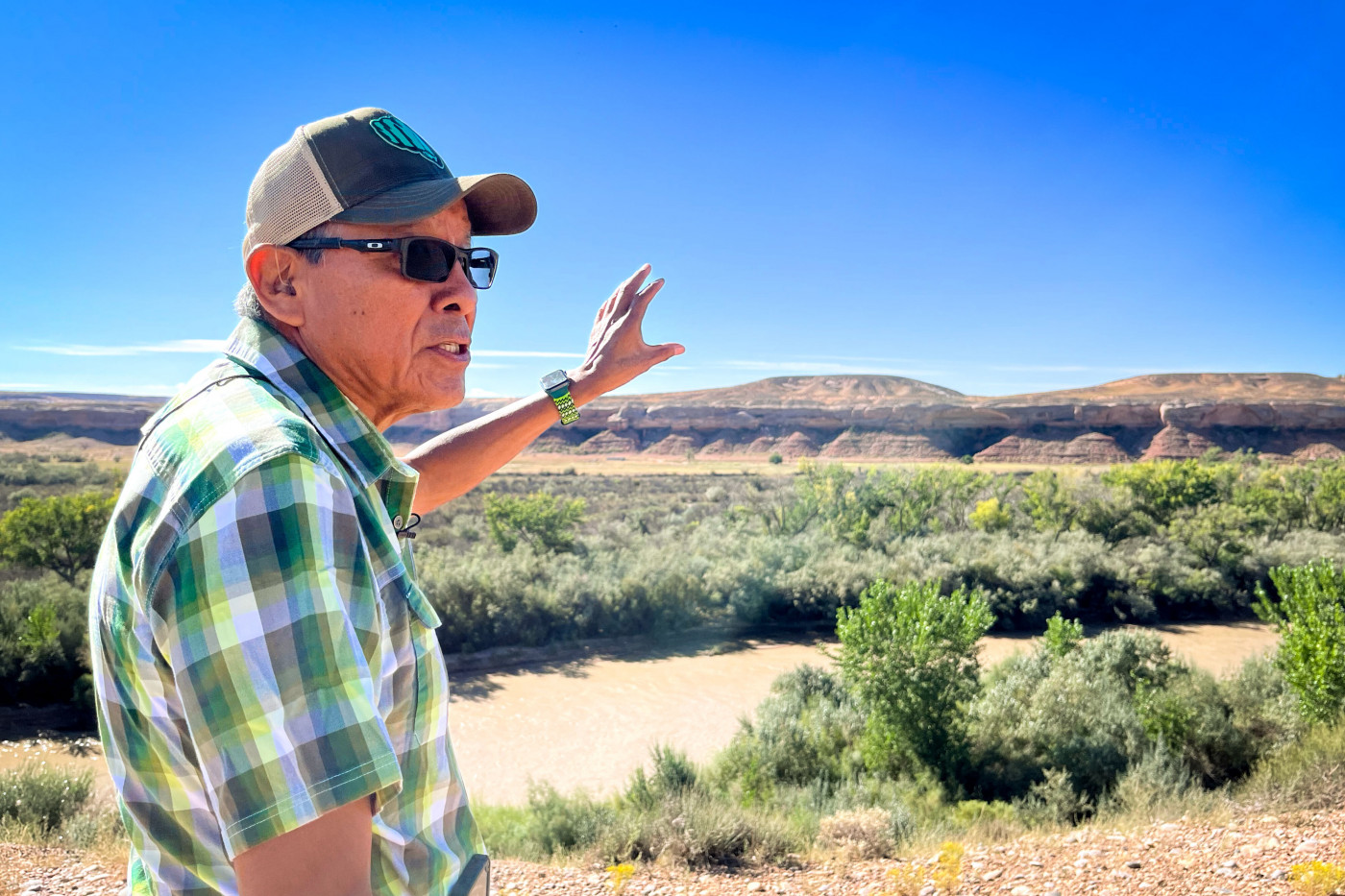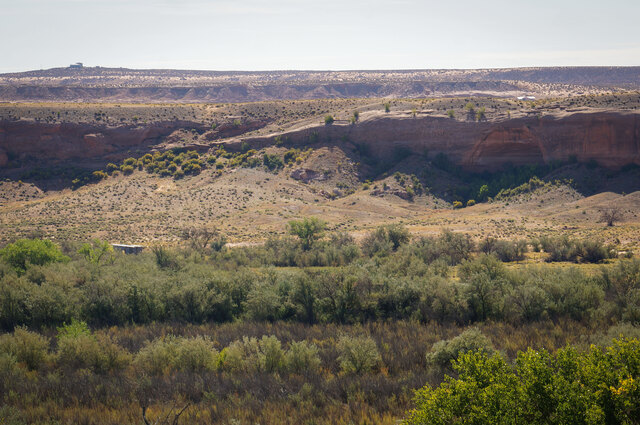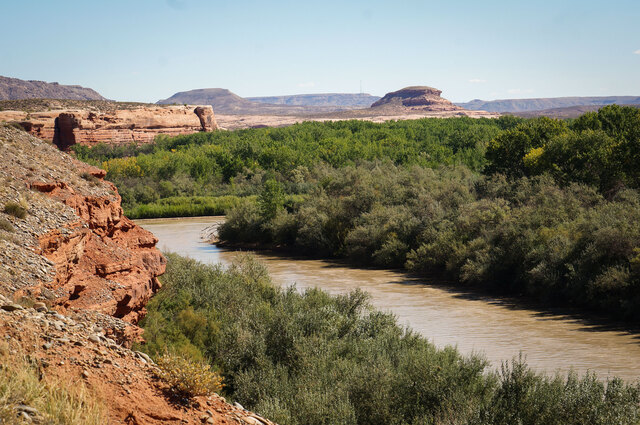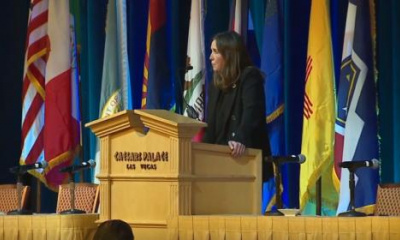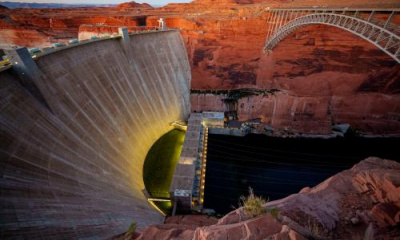Navajo family farms once lined the San Juan River in southeast Utah, but many have fallen idle. A water rights settlement with Utah has given some Navajo residents hope those farms can return.
The San Juan River creates a winding green ribbon through southeast Utah’s red rock country.
The Colorado River tributary is a vital water source for the desert landscape and also marks part of the Navajo Nation’s northern border.
“I was born and raised on top of the hills over there,” said tribal member Mark Maryboy, pointing across the river from the top of a bluff. “As long as I remember, there was always farming.”
When he was a boy, he watered his family’s sheep on the banks of the San Juan. Farmers up and down the river grew everything from corn to chili to watermelon, he said.
Listen to the story here.
Early Navajo settlement and use of the land along the San Juan dates back to at least the 1700s. By the late 1800s, tribal farming operations near the river allowed them to set up a flourishing trade system with white settlers. Navajo farms on the south side of the San Juan continued into the 1950s.
In the decades since Maryboy’s childhood, however, his family’s farm and many others have faded into memory.
“When I was a child, more and more Navajos were dependent on farming out here,” he said. “That's something that we want to work on and get going again.”
The historic water rights settlement signed between Utah leaders and the tribe in 2022 has given him hope that these farm fields have not seen their last harvest.
One of the big reasons farms have fallen idle, he said, is a lack of money to handle the expensive tasks required to keep them going. He expects the settlement to include millions of dollars for infrastructure — funding that could help with things like building canals and setting up the pumps and pipelines necessary to use water from the river.
A former elected official with both San Juan County and the tribe, Maryboy has worked with engineers for years to design plans for these water projects so his community can be ready when the time comes.
A section of land next to the San Juan River near where Mark Maryboy’s family farmed during his childhood, Sept 19, 2024. Credit: David Condos, KUER
The settlement gives the Navajo the right to use 81,500 acre-feet of San Juan River water each year. It also includes more than $210 million in federal funding from the Bipartisan Infrastructure Law, along with $8 million for water infrastructure from the state of Utah, to help the Navajo access that water.
That money will help fulfill a promise that dates back to the Navajo Nation’s establishment, said University of California Irvine Visiting Law Professor Heather Tanana, who’s a citizen of the Navajo Nation originally from southeast Utah.
“The government's policy at that time was to promote agriculture, to promote farming. So this promise has been made to Navajo for a very long time that they would be able to productively develop the land … and you can't do any of that without water.”
As of now, however, the tribe’s new water rights only exist on paper. More than two years after signing the settlement, the money from that agreement has not yet gone out. According to the tribe, there are more legal processes and hydrographic surveys that need to be completed first.
In 2023, the U.S. Supreme Court ruled against the Navajo Nation, saying the federal government does not have a responsibility to help the tribe with plans to access the water it has the right to. That means it’s up to the Navajo Nation to handle all the planning and preparations needed before any water projects can be built, Tanana said.
Previous projects have shown that it can take a long time for these types of large-scale endeavors to see fruition. The Navajo-Gallup Water Supply Project, for instance, was authorized in 2009 and is expected to be fully completed in 2028.
Even with the long wait, Tanana said residents have a reason to be hopeful.
“There are so many people on Navajo, I think, who were reconciling themselves to the fact that they would probably never see water access in their life ... that families would never be able to turn on taps, that farmers wouldn't be able to cultivate the lands,” she said. “That idea — even though it's delayed and is going to take several more years — that has changed.”
Navajo family farms once lined the San Juan River in southeast Utah, seen here Sept. 19, 2024, but many of them have fallen out of commission. A water rights settlement between Utah and the tribe has given some Navajo residents hope those farms can return.Credit: David Condos, KUER
If Navajo farms can once again produce crops along the San Juan, that could become a potential economic driver for the tribe. Access to water isn’t the only challenge Navajo farmers face, though.
“The reality is a lot of our Indigenous producers don't have access to the market,” said Indigenous Chef Bleu Adams. “So we want to create a mechanism to get their product to market and then we'd have a chance at building a resilient economy.”
Adams directs Indigehub, an organization that supports Native farmers. When building an agricultural economy from the ground up, she said that support has to take many forms.
One way is by providing Native farmers with what Indigehub has labeled “food hubs” — shipping containers fitted with solar generators and commercial refrigerators for cold storage. The organization also helps farmers create organic compost and tests their soil’s nutrient density to potentially allow them to get a higher price for their products.
Then after harvest, the farmers also need a channel to sell their goods. Adams, who currently works with the American Culinary Corps, educates chefs nationwide about the benefits of buying from Native farmers so they will add more Indigenous foods to the menu.
“We need that allyship. Our community members know what our issues are. We need outside allies that can take our stories and can take our voice and amplify that in different spaces.”
Before more Navajo farmers along Utah’s San Juan can tap into any new markets, however, they’ll need the water rights settlement to turn into water that can irrigate their fields.
For Maryboy, restarting these farms is part of a broader push to maintain the tribe’s traditional culture of growing food with their arid homeland’s most precious resource.
“Water is a part of our life. … It's in our songs and in our prayers,” he said. “Water is forever.”
Even with all the remaining challenges, he is hopeful that someday the settlement will give him a chance to farm where his family did decades ago.
“I think about it all the time. … Those were wonderful, happy days in my life.”
KSL TV photographer Mark Wetzel contributed to this story.

